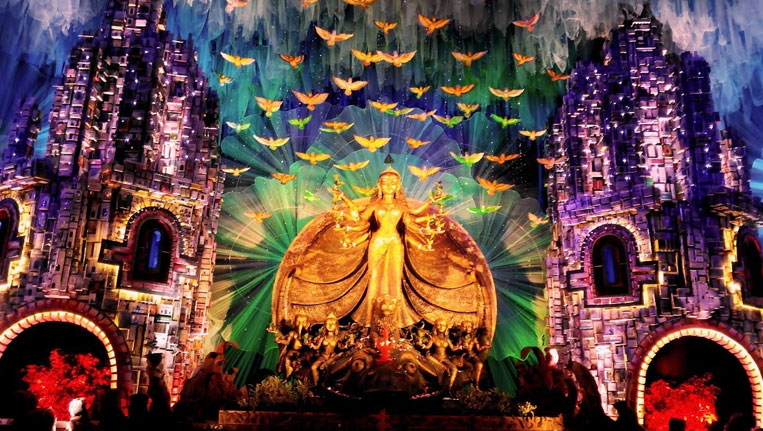
When and where the actual Durga Puja started is a matter of debate. From the chapters of Indus Valley civilization, we get the worshipping of mother Goddess. As per the Bengal’s Ramayana by Krittibas, Rama collected 101 blue lotuses from the Kaidaha Lake (Bagura, Bangladesh) to complete his mother worship (Vasanti Puja or Akalbodhan). A popular legend is from Markendeya Purana- stating that King Surath from the royal lineage of Chedi started Durga Puja at Kalinga (Odisha). During 1510, Raja Viswa Singha from the Koch dynasty of Coochbehar and in 1610 the Ray Chowdhury family of Badishaa, Kolkata arranged Durga Puja. Again, according to other sources, Raja Ganesh first started this in the 15th century at Srihatta (modern-day Sylhet, Bangladesh). Another reference claims that, in 1563, Raja Kansa Narayan of Taherpur, Rajsahi was the first one to be involved in conducting the ceremony.

Here, image of the prior short, black and ugly image of Mahishashura can be considered. It was used as the icon of ignorance or Tamsic qualities. Some may experience the smell of racism in that. That is not the point of discussion here. The Asuras and Gods were not always bound to be black and white skinned Indians, respectively at every place. But in due course of time, Mahisashura has evolved as a macho man. There is nothing bad in that. On the other hand, the valiant warrior and commander of Devas, Kartik has turned shy and gawky and typical mamma’s boy. Thus Mahishashura seems to be a Hero and Kartikeya a kiddish lad. Today’s youth cannot be blamed when they think Mahishasura to be their icon instead of Kartik, as for them six-packs and muscles are the images of heroism.

There lies the significance of art. The sacred art is considered to be an icon representing anything other than itself. This is the opening towards the world of spirituality. It represents the truth, beauty and virtue. The scared art of India is not developed in a day. The wisdom and knowledge of scriptures are working underpinning the developments. Hence, one can never give shape to a sculpture or art anyhow. The sculptures are also referred to as Yantras that radiates specific energy and if the rules of development are violated, that emotion expressed will be of no use. A diversion can change the entire consciousness. That’s why not worshipping or performing Puja as per the principles of scriptures or Shashtras are prohibited.
Content courtesy:
https://www.facebook.com/Halleysart/
https://roar.media/bangla/main/history/how-durga-puja-festival-started-in-bangladesh/
https://theimaginativeconservative.org/2016/09/the-role-of-sacred-art-longenecker.html
Image courtesy:
https://www.wikiwand.com/en/Durga_Puja
https://www.tourmyindia.com/blog/top-20-pandals-to-visit-during-durga-puja-in-kolkata/
https://www.dailyo.in/lifestyle/durga-puja-bengal-history-mythology-goddess-durga/story/1/27267.html



































